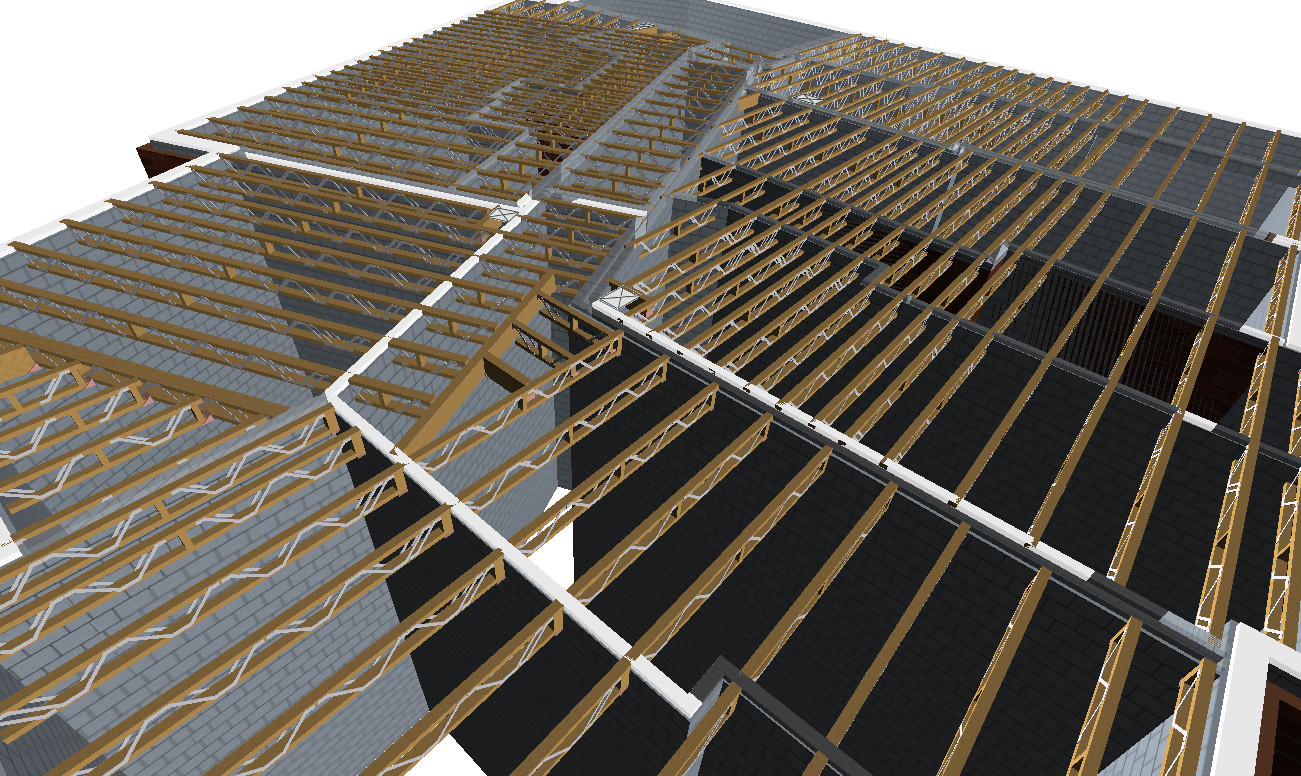Be part of the collaborative BIM environment
Horizon transforms the traditional approach to timber frame design. It’s the UK’s first timber frame tool built on Autodesk’s® Revit®, enabling specialist timber roof and floor designers to be an integral part of a collaborative BIM environment.
Revit® models created by all design disciplines are combined into a single, integrated model used to create every 2D view, 3D view, visualisation, schedule and GA drawing.
This means all AEC (Architectural, Engineering and Construction) disciplines can work together, building an accurate digital representation of the real-world structure – one that contains the most up-to-date building design information.
Horizon Software offers the following benefits:
1.Design, 2.Visualise, 3.Document
The information-rich 3D building model created in a BIM environment provides insightful design information that aids the design process and supports better decision making and planning throughout the project. As a result, you can identify problems early on in the design phase when the impact on cost and time are much lower. The single 3D model remains at the centre of workflow, so activities that require close collaboration between the different stakeholders are handled much more competently, including clash detection, construction planning, fabrication and all aspects of documentation. Impressive building design visualisations made quickly and easily with Revit’s® 3D rendering engine are useful in many ways - from obtaining a better understanding of the intricacies of the design and documenting construction details, through to delivering compelling sales propositions to your customer.
Powerful features for timber frame designers
Horizon software draws on Wolf Systems’ expertise in timber frame design and engineering. It is the result of years of research and development incorporating feedback from applied use on real projects. To help you design faster and better, intelligent 3D objects representing physical building details such as wall panels, doors, floors and roof trusses can be manipulated and specified to represent just about every realworld timber framing application and construction method.
Singularly Inclusive
Working from a single integrated model, design revisions and changes are automatically updated throughout the entire model, so any amendment need only be made once. This reduces errors, improves accuracy and streamlines workflow – not just for the person making the change but for everybody working from the model.


